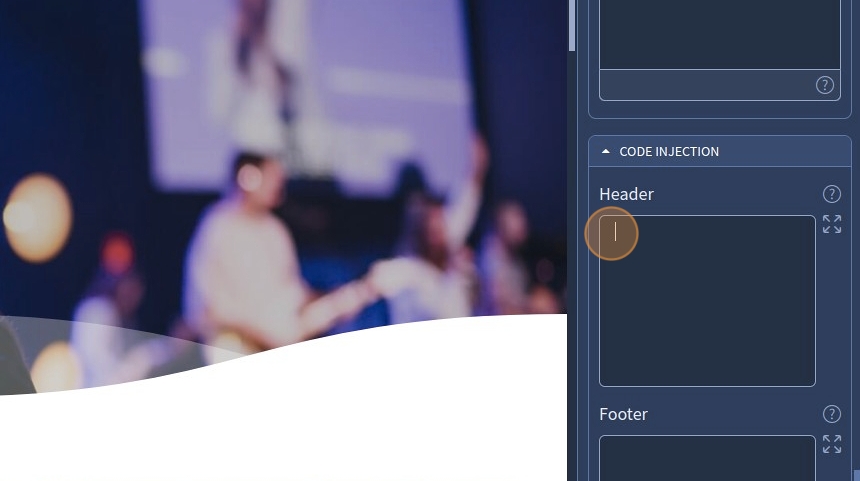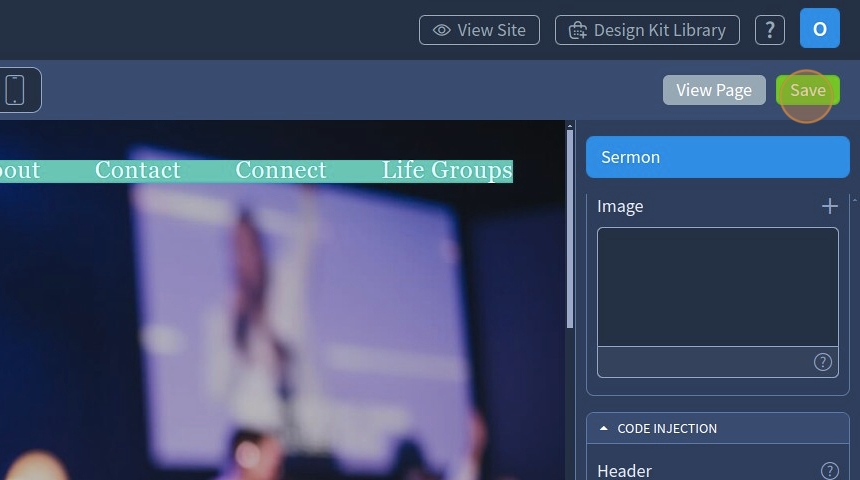How to add Sermon Posts?
Create and publish new sermon posts easily.
1. The Sermons extension is used to share and organize Sermon content on your website. It also helps you group Sermons by categories, series, speakers, or topics for better browsing. Click the "Sermons" tab to create a new Sermon post

2. Each Sermon post is listed by the following: Name (sermon title), URL, Author (your profile name), Published On, Actions

Adding a new post
3. Click "Add" to create a new Sermon post

4. Specify the Sermon post name and click "Add"

5. The Actions field lists the available actions for the created Sermon posts. You can edit, duplicate, or delete your sermons

6. The "Name" field contains your Sermon post title and status ("Published" or "Draft"). You can sort the Sermons in alphabetical order by clicking the arrows next to the "Name" field. Sorting is also present in the "Published On" field
Additionally, you can access and edit the content of any Sermon post if you click on the needed sermon name under the "Name" field

Post Properties
7. Click "Sermon Name" to rename the Sermon post. If needed, you can also rename the Sermon URL. Make sure to keep the URL short and relevant, and include the main keyword you have chosen for the page.

8. Click "Edit Short Description" to edit the short description for the Sermon post

9. Change the Short Description with the Text Editor and click "Apply"

10. After modifying the short description, you can preview the changes on the live site if you click the "View Page" button
If it's a newly created post, first click "Save Draft" and then click "Publish". If you want, you can keep editing your posts in Draft status until you're ready to publish them

11. The following widgets can be added to a Sermon post:
Structure: Row, Container.
Basic: Text, Image, Button, Text Button, Divider, Space, Menu, Contact Form.
Galleries: Slider, Grid Gallery, Carousel Slider, Tile Gallery.
Social: Social Links, Social Buttons, X Timeline, Facebook Feed.
Media: Video, Video Player, Audio Player, Soundcloud.
Advanced: Advanced Image, Advanced Slider, Advanced Contact Form.
More: Google Map, Google Map Pro, Google Calendar, Mailchimp, Countdown Timer, Counter, Accordion, Tabs, Popup, Progress Bar, Circular Progress Bar, Scroll To, Slideshare, PayPal Button, Breadcrumbs, Iframe, Embed, Google Search, Sermon Notes.

12. Select the "Allow Comments" checkbox to show comments via the Disqus comments plugin. You can enable Disqus in Sermons Settings - General

13. Select a Sermon Series category from the dropdown to assign a category to the Sermon post
Additionally, if needed, you can specify tags from the Topics, Scriptures, and Speakers for the Sermon post

14. Click the pencil icon to specify the Preview Image. It will be seen both on the Sermons Main Page and on the Sermon Post page.

15. Additionally, specify the Title and Alt Text for the Preview Image.
Visitors will see the Alt-Text if the browser blocks the possibility of previewing images.

Publishing
16. Select a Status from the dropdown for the Sermon post. You can select the following: Published or Draft. It works the same as on regular pages
Published - will be visible to both the website administrator and visitors who view the site live.
Draft: It will show a 404 page instead of the actual page on the live preview. You can still view the Draft while logged in to your Control Panel.

17. Visibility allows you to make your Sermon post public or Password Protected. You can use the general password for all posts or use a unique password for each post

18. "Published On" allows you to set the published date of the Sermon post, as well as rearrange the published date for existing sermons. Click the calendar icon and specify the exact time of the Sermon publication.

19. The SEO Settings tab allows you to configure the following: Meta Title, Meta Description, Canonical URL, No-Index, No-follow, and Hide Canonical
Meta Title is the name of your page displayed in the browser tab and search engine results. Make sure to use unique titles for each of your website pages. Check out this SEO Optimization guide for further information.
Meta Description is the text under Meta Title. It describes what the page is about and can help you attract more visitors from organic search.
The Canonical URL is the URL of your website page that should be considered official or primary when there are multiple pages with similar or duplicate content. This helps prevent issues with duplicate content and ensures that search engines know which page to prioritize in search results.
No-Index - If enabled, tells search engines not to include a specific page in search results.
No-follow - if enabled, tells search engines not to follow the links on a page. This means that search engines won't pass on any ranking value (or "link juice") to the linked pages. It's often used for paid or sponsored links so they don't affect search rankings.
Hide Canonical - If enabled, the attribute rel="canonical" will be removed from the current page.

20. Open Graph Meta Tags allows you to configure the appearance of the Title, Description, URL, and Image of the Sermon post when shared on social media platforms
Please note that if these fields are empty and if you have "Generate Default Open Graph Meta Tags" enabled in Settings - SEO, the social media platforms will display the content from the SEO Settings of your current sermon

21. Code Injection allows you to add custom code into the header/footer of your current Sermon post. Use the four arrows next to the fields to open a modal window and paste a code there for convenience.

22. Click "Save" to confirm the changes

